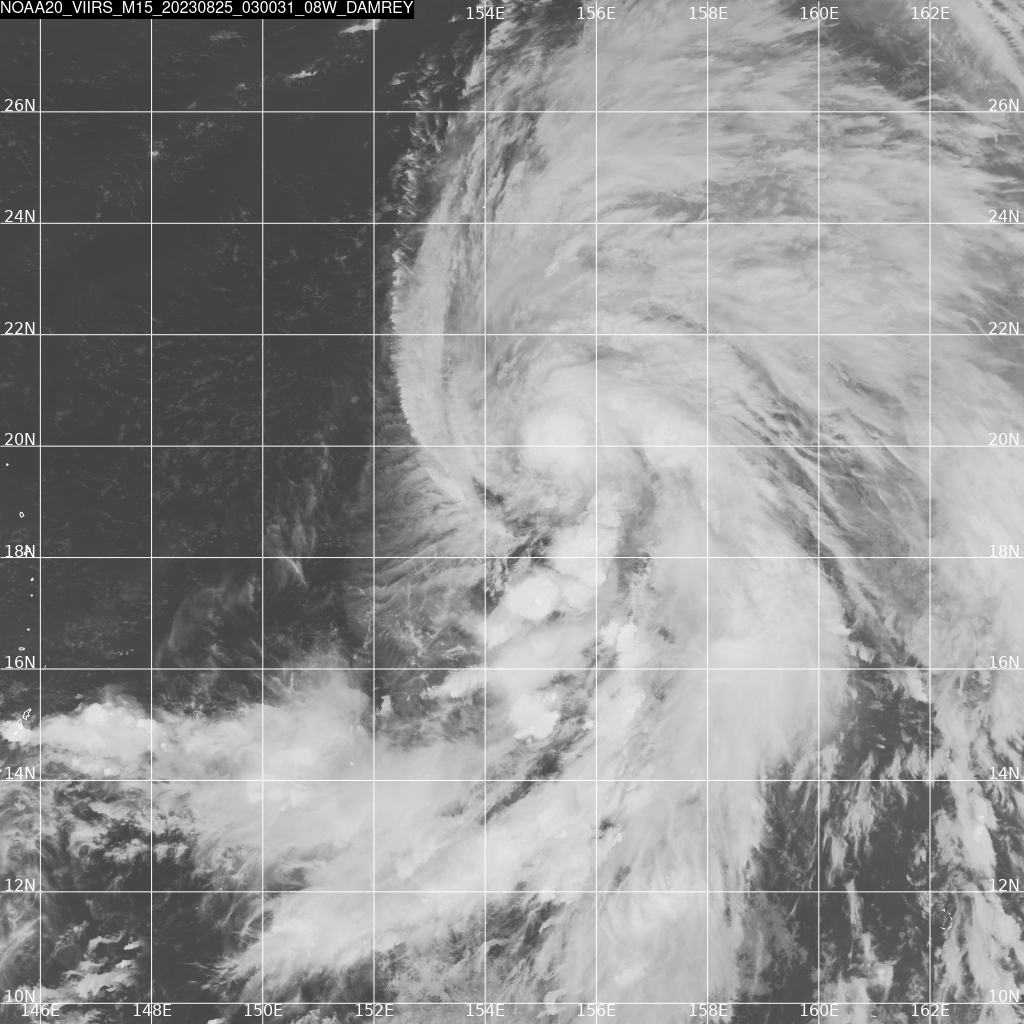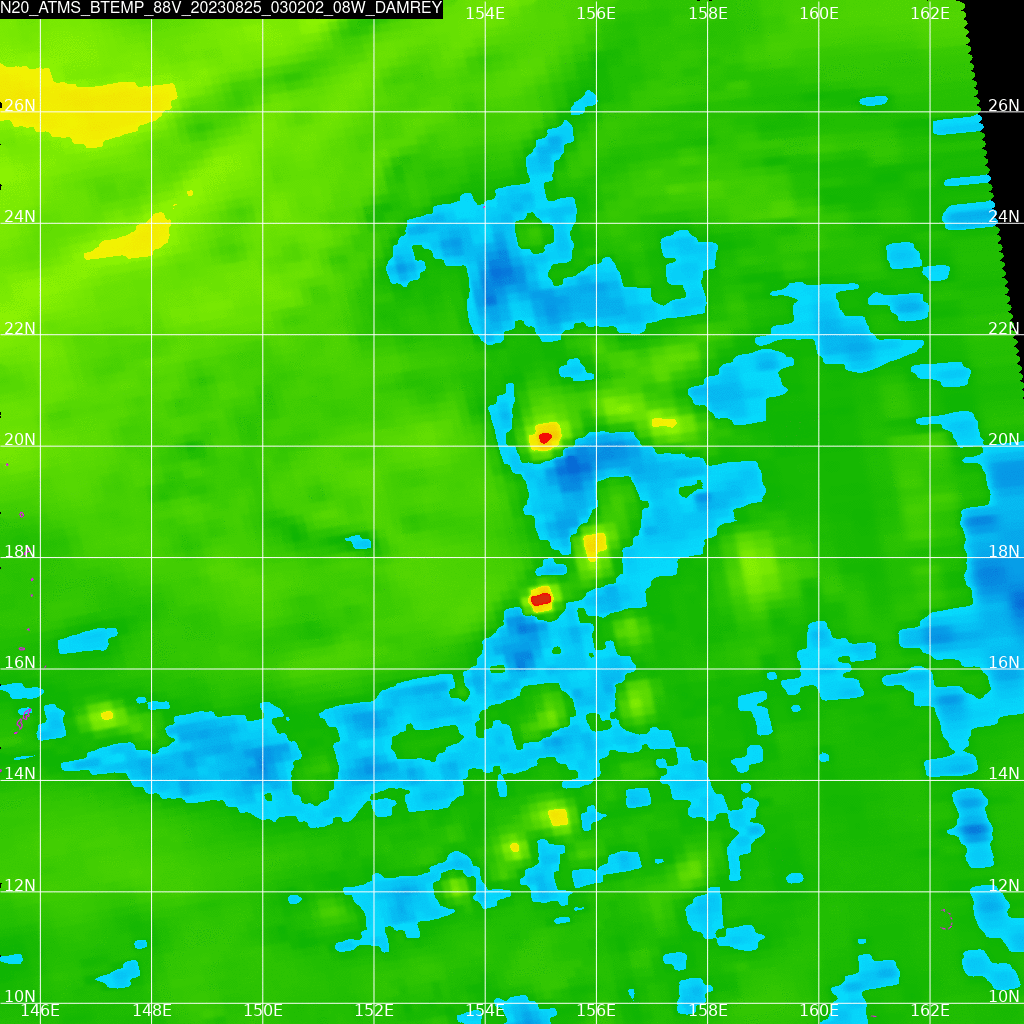Views of Tropical Storm Damrey from the Guam Direct Broadcast site

Direct Broadcast antennae give timely full-resolution imagery from various Low-Earth-Orbit satellites as they move within the view of the satellite received. Community Satellite Processing Package (CSPP) software takes the downloaded signal and produces imagery (or AWIPS-ready files). The toggle above shows VIIRS (Visible-Infrared Imaging Scanning Radiometer) and ATMS (Advanced Technology Microwave Sounder) data from NOAA-20 from a Guam overpass near 0300 on 25 August 2023. A benefit of having visible/infrared and microwave instruments on the same orbiting platform is that it’s easier to compare (directly) features in the two images. In this case, note how the brightest (whitest) features in VIIRS channel M15 (10.8 µm) are very cold in the 88 GHz, and have large rain-rates.
Data from direct broadcast also allows a user to compare microwave data from two different satellites. NOAA-20 and GCOM-W1 both carry microwave sounders (the Advanced Microwave Scanning Radiometer — ASMR-2 — in GCOM-W1) that sense energy at similar frequencies. The toggle below compares ATMS data at 88 GHz and AMSR-2 data at 89.2 GHz from about the same time. Note the significantly better resolution from AMSR-2!

Thanks to Doug Schumacher, SSEC/CIMSS, for supplying these images!

